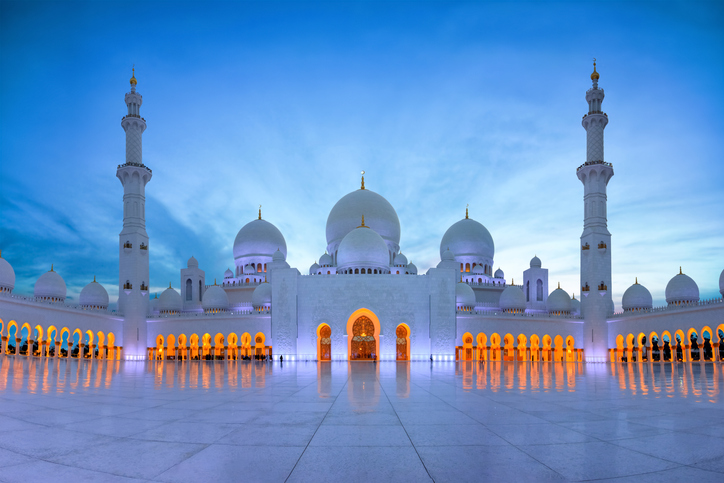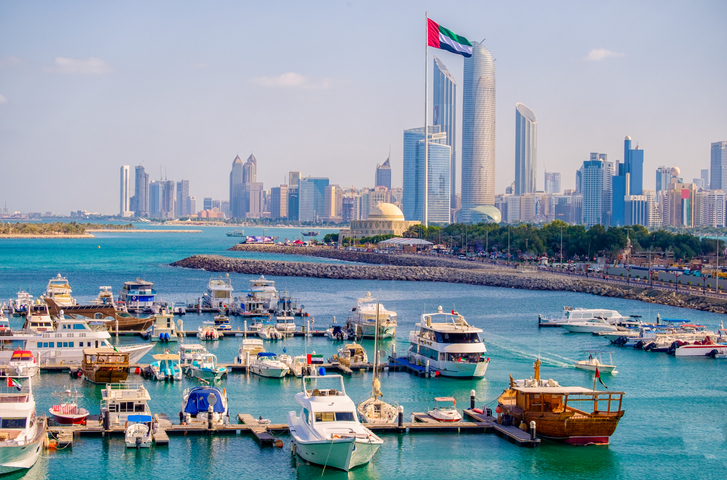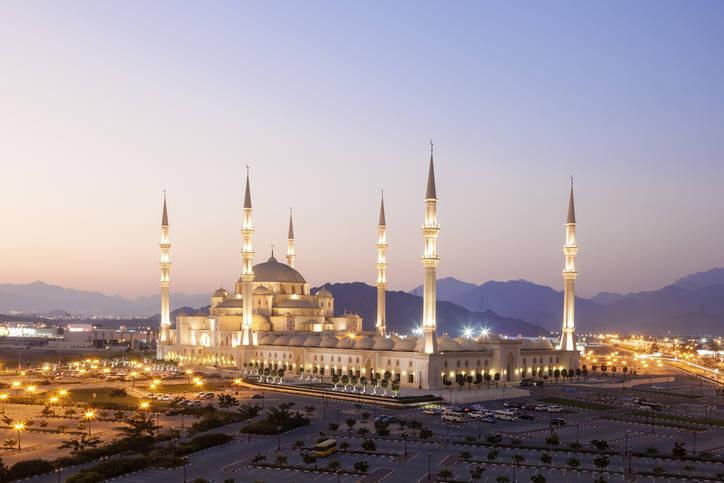Taking a trip to the United Arab Emirates is something that will change your life. An experience featuring contrasts and cultural differences that never fails to disappoint.
Let’s start by getting our bearings – the United Arab Emirates (UAE) is a country in the Middle East made up of seven emirates: Abu Dhabi, Ajman, Dubai, Fujairah, Ras al-Khaimah, Sharjah and Umm al-Quwain.
Some are more touristic than others, and although Dubai is the first name that springs to mind, the UAE has much more to offer.
Abu Dhabi:
The capital of the UAE stands out for its modernity. All that remains of the region’s original architecture is the Emir Palace known as the ‘White Fort’, which contrasts with the nearby seven-star hotel, the first of its kind in the world. Tourist attractions in this megalopolis include the Sheikh Zayed Grand Mosque, with capacity for up to 41,000 worshippers, which can be recognised by its iconic white marble domes.
If you want to enjoy the city’s opulence, then a must-see stop on your trip is the Emirates Palace, a hotel that is an icon for extreme luxury which boasts a private beach and a helipad. The hotel has even been called “the most expensive hotel in the world” in terms of how much it cost to build.
The Etihad Towers are also well worth a visit, and this building complex with five towers offers panoramic views over the city and the Arabian Gulf. The Towers also feature a selection of the most expensive and exclusive boutiques in the world, including private VIP rooms where customers can make their purchases.

Dubai:
The most famous emirate in the Western world is a desert filled with giant shopping complexes, luxury hotels, skyscrapers and more, in a seemingly endless tribute to lavish ostentation. The city is divided into four large districts, and Dubai’s old town can be found to the north of the city, in Deira, which is where you can visit the most important souqs. This district is cheaper than the rest of the city.
Bur Dubai, the oldest part in the city and the location for the city’s museums, can be found next to Deira.
Most of the public beaches are in Dubai Marina, an area filled with modern buildings and entertainment at all hours of the day and night.
Last but not least is the heart of the city: Downtown Dubai is the location of the vast Burj Khalifa complex, which houses a number of attractions. Shopping lovers will be overjoyed to be able to choose from more than 1200 shops.
Dubai also has some natural attractions, such as the Hatta rock pools in the Hajar mountains, as well as the Wadi Hatta valley and its old fortress.

Sharjah:
This is another of the emirates characterised by numerous skyscrapers, although it has refocused its tourist offer to the world of the arts. Visitors can choose between twenty museums, while the Al Shuwaiheen district features a collection of art galleries. There’s also a natural history museum at Desert Park, in which the highlight is the Arabian Wildlife Centre, with a collection of wildlife native to the UAE.
There’s no shortage of options for shopaholics, and there’s an enormous shopping centre next to the Khalid Lagoon and the King Faisal Mosque.
Ajman:
Ajman is the smallest emirate and has a rich maritime tradition. It has 16 kilometres of coastline with white beaches and turquoise waters where you can often spot dolphins from the shore. There are hotels and apartments throughout its three districts, with most of the accommodation in Ajman City, where you can visit the Ajman National Museum, housed in a fortress.
East of Ajman lies Al Manama, an agricultural region with areas of outstanding natural beauty. Lastly, there’s Masfout, which has rich vegetation and very few tourists.
Ras al-Khaimah:
This emirate best reflects the traditional Arab world. Tourists are attracted by the promise of an “authentic” Arab experience, and the region has beaches, vast deserts, local products and traditional cuisine.
Fujairah:
This emirate is situated in the Gulf of Oman, and its capital of the same name is famous for its beauty. Modern buildings and avant-garde architecture show the young age of this emirate. The area features a simple lifestyle and is separated from the rest of the UAE by the Hajar mountains. The region boasts 70 kilometres of coastline with wide, quiet beaches, the ideal destination for travellers who want to “disappear off the map”. It is the perfect place for water sports and scuba diving, and visitors can go on safaris in the desert or travel through the mountains by jeep.
In terms of architecture, there are two very different sized buildings that both surprise and delight: the Al Badiyah Mosque, the oldest and smallest in the Emirates, a very simple and traditional structure with four domes that can barely fit 20 people. On the opposite end of the scale lies Fujairah’s Grand Sheikh Zayed Mosque, which only allows entry to Muslims and is the second largest mosque in the UAE with 65 domes, six minarets and capacity for 28,000 worshippers.
Tourists who want to see more modern attractions can visit Al Qasba, a shopping centre with a giant Ferris wheel that characterises the Emirate and includes shops, restaurants and more, making it an excellent place to visit at night.
After a long day of sightseeing around Fujairah, you’re sure to need a good rest. You can relax at the Blue Diamond AlSalam Resort ***** GL, a beachfront hotel with luxuriously spacious rooms and everything you need: swimming pools for adults and children, an exclusive spa offering a range of treatments, and a wide variety of cuisine. A gift for every one of your senses.

Umm al-Quwain:
This is probably the least-known of the emirates. It has all kinds of different landscapes, from mangroves on the coasts of the Persian Gulf to sand dunes with fertile oases. Camel rides or quiet excursions by boat are some of the attractions in this region.
As you can see, the options in the UAE are practically unlimited, and luxury and modernity combine with traditions in a country where everything is possible.






